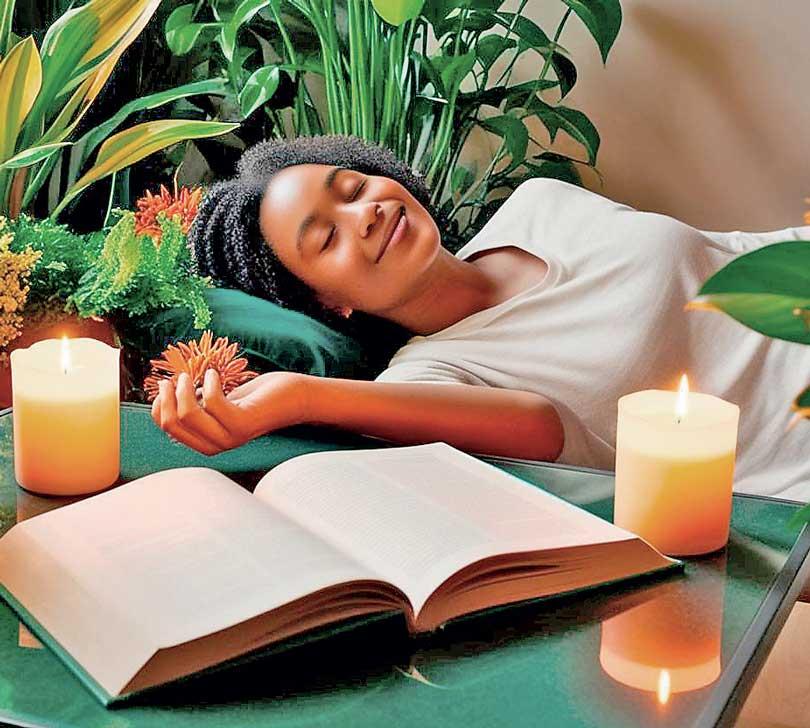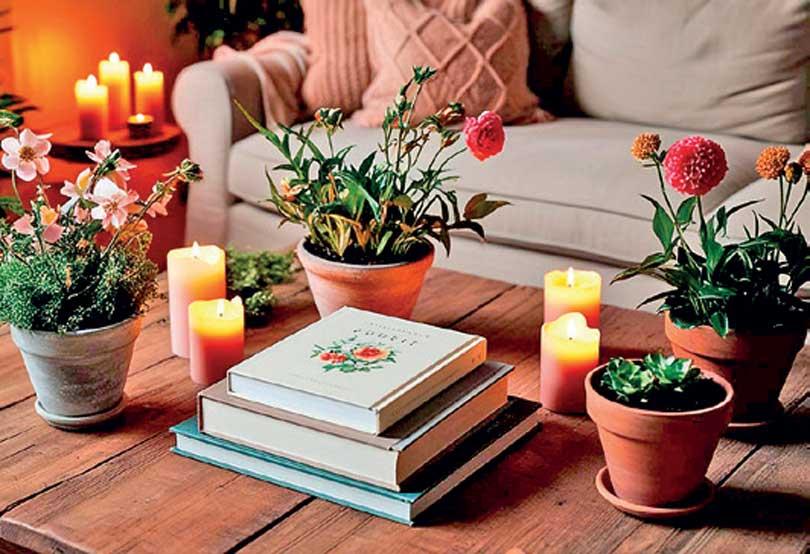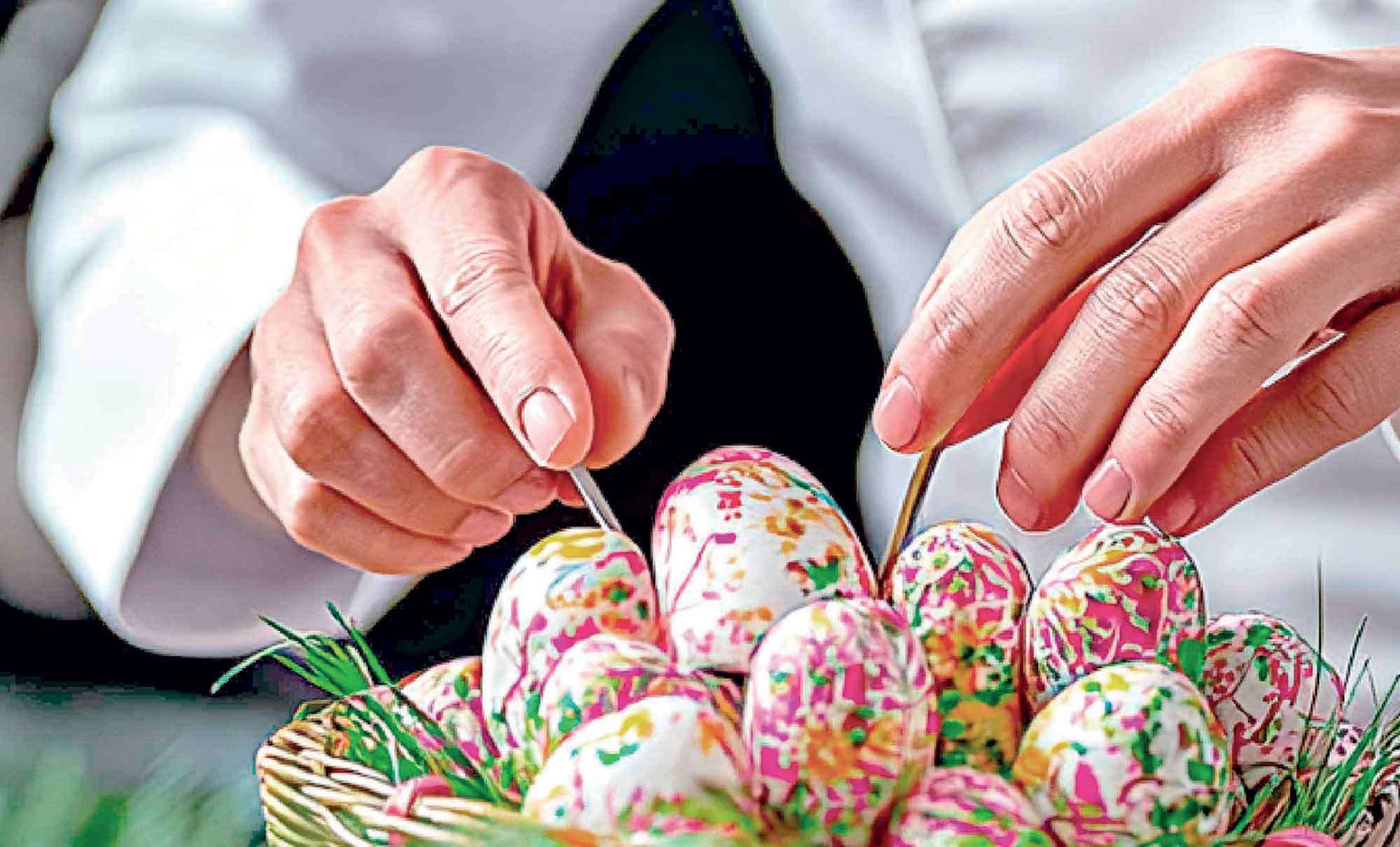



Indulgence used to mean luxury outside the home: a spa day, fine dining, a weekend getaway. But the tide has turned. Now, luxury is lighting a $40 candle at 4:00p.m. on a Tuesday
Weekends, once booked to the brim with brunches, parties, and productivity hacks, are slowing down. The “slow weekend” movement encourages doing less and doing it well
 In a world that once glorified the hustle, the fast lane, and the curated chaos of a social calendar bursting at the seams, a quiet revolution is taking place. More and more people are embracing a slower, softer lifestyle; one that centres around comfort, rest, and the simple pleasures of home. The result? The rise of the homebody. Far from being a euphemism for laziness or introversion, today’s homebody is redefined: stylish, intentional, and empowered. Nesting, slow weekends, and indulgences like at-home spa days, candlelit reading nooks, and self-cooked gourmet meals have all become symbols of this cultural shift. As we increasingly opt for cosy over crowded, are we witnessing a wider recalibration of how we value time, space, and self?
In a world that once glorified the hustle, the fast lane, and the curated chaos of a social calendar bursting at the seams, a quiet revolution is taking place. More and more people are embracing a slower, softer lifestyle; one that centres around comfort, rest, and the simple pleasures of home. The result? The rise of the homebody. Far from being a euphemism for laziness or introversion, today’s homebody is redefined: stylish, intentional, and empowered. Nesting, slow weekends, and indulgences like at-home spa days, candlelit reading nooks, and self-cooked gourmet meals have all become symbols of this cultural shift. As we increasingly opt for cosy over crowded, are we witnessing a wider recalibration of how we value time, space, and self?
The Homebody Renaissance
The pandemic was the great reset that many didn’t realise they needed. While lockdowns were challenging, they also prompted a reassessment of our routines. Once the initial restlessness wore off, people began to take stock of their surroundings. Home was no longer just a place to sleep between shifts or a weekend pitstop; it became the centre of our universe. This reorientation birthed a new wave of domestic appreciation. Interior design boomed, DIY projects surged, and suddenly, sourdough starters and balcony herb gardens were the new status symbols. The trend hasn’t faded. Instead, it has evolved into a more permanent, lifestyle-driven philosophy: “nesting” with intention.
Nesting: Comfort as a Lifestyle
“Nesting” used to be associated with expectant mothers preparing for a baby, but today, it’s shorthand for creating a sanctuary. Think plush throws, earthy ceramics, curated bookshelves, diffused lighting, and the gentle hum of a vinyl record. It’s a conscious effort to make the home a reflection of calm and identity. Homebody culture is less about hiding from the world and more about filtering what comes in. There’s mindfulness in selecting scents for each room, choosing sustainable linens, or investing in a statement chair you’ll actually sit in. Social media feeds are now flooded with #cozycore, #slowliving, and #hygge-inspired aesthetics, pointing to a broader collective desire for calm. As writer and designer Ilse Crawford once put it, “Design is not just about making things look good, it’s about making them feel good.” This ethos underpins the new nesting mindset.
The Slow Weekend Movement
Weekends, once booked to the brim with brunches, parties, and productivity hacks, are slowing down. The “slow weekend” movement encourages doing less and doing it well. Long, unhurried breakfasts. Screen-free afternoons. A puzzle laid out across the coffee table. Afternoon naps without guilt. It’s a rebellion against the tyranny of to-do lists. The idea isn’t to become anti-social, but rather intentional. Instead of RSVPing to three birthday drinks, a Saturday might be spent rearranging a spice drawer or tending to houseplants. And there’s growing research to back the benefits of this approach. Slowing down improves mental health, reduces burnout, and fosters deeper connections; both with oneself and with others. Crucially, slow weekends are becoming aspirational. People boast less about being busy, and more about how peaceful their Sunday was. It’s a subtle cultural pivot: self-worth is being redefined by balance, not busyness.
The Age of Home Indulgence
Indulgence used to mean luxury outside the home: a spa day, fine dining, a weekend getaway. But the tide has turned. Now, luxury is lighting a $40 candle at 4:00p.m. on a Tuesday. It’s mixing fresh fruit into sparkling water, drawing a bath with Epsom salts and petals, or investing in a velvet robe that never leaves the house. The term “soft life” is now a badge of honour. Home indulgence is also about reclaiming rituals. The way you make your coffee. The time you take for skincare. The decision to stay in and watch a film with a bowl of homemade popcorn. These aren’t frivolous habits; they’re signals of self-respect and emotional maintenance. Interestingly, brands are catching on. Companies like Soho Home, The White Company, and Aesop are marketing to the homebody customer: someone who sees the value in tactile, sensorial home experiences and is willing to spend on quality.
Where Do We Go
From Here?
Like any cultural shift, the homebody movement is not a monolith. Some will always crave the thrill of the outside world; the dance floors, the festivals, the open road. But even the most extroverted among us have likely felt the magnetic pull of a well-worn blanket and the scent of something baking in the oven. Perhaps the answer isn’t in becoming full-time homebodies, but in embracing the balance. Knowing when to go out and chase the horizon, and when to stay in and water the plants. In a society that has long rewarded output, speed, and visibility, the quiet act of staying in has become something radical. And for many, it’s not a trend. It’s a return to something we didn’t know we missed. The door is open. The kettle’s on. And honestly? There’s no place like home.
Are We Escaping or Evolving?
The homebody trend raises a deeper question: are we seeking solace because the outside world feels too overwhelming? Or are we simply evolving toward healthier, more sustainable ways of living. It’s possible we’re doing both. In a time of economic uncertainty, climate anxiety, and information overload, retreating into our own spaces can feel like the most empowering act. Not escapism, but a form of resistance; saying no to the speed and noise, and yes to serenity. Psychologists refer to this as “restorative homemaking”- the idea that our environment deeply affects our emotions and that cultivating peace in our surroundings can act as a shield from external chaos. Of course, not everyone has the privilege of a beautiful or spacious home, and that’s a point worth noting. But the principles of homebody culture; mindfulness, simplicity, care, can be adapted to any space, even a rented room or studio flat. It’s not about square footage; it’s about mindset.
The New Social Life
Being a homebody doesn’t mean being antisocial. It just means reshaping how we socialise. There’s a resurgence of dinner parties, potlucks, board game nights, and living-room salons. Inviting people into your space feels more intimate, and often more rewarding, than meeting in a noisy bar or overpriced café. Shared cooking, joint creative projects, or simply watching a show together in silence: these are the new markers of connection. As our social lives become less performative and more personal, there’s room for deeper bonds.











